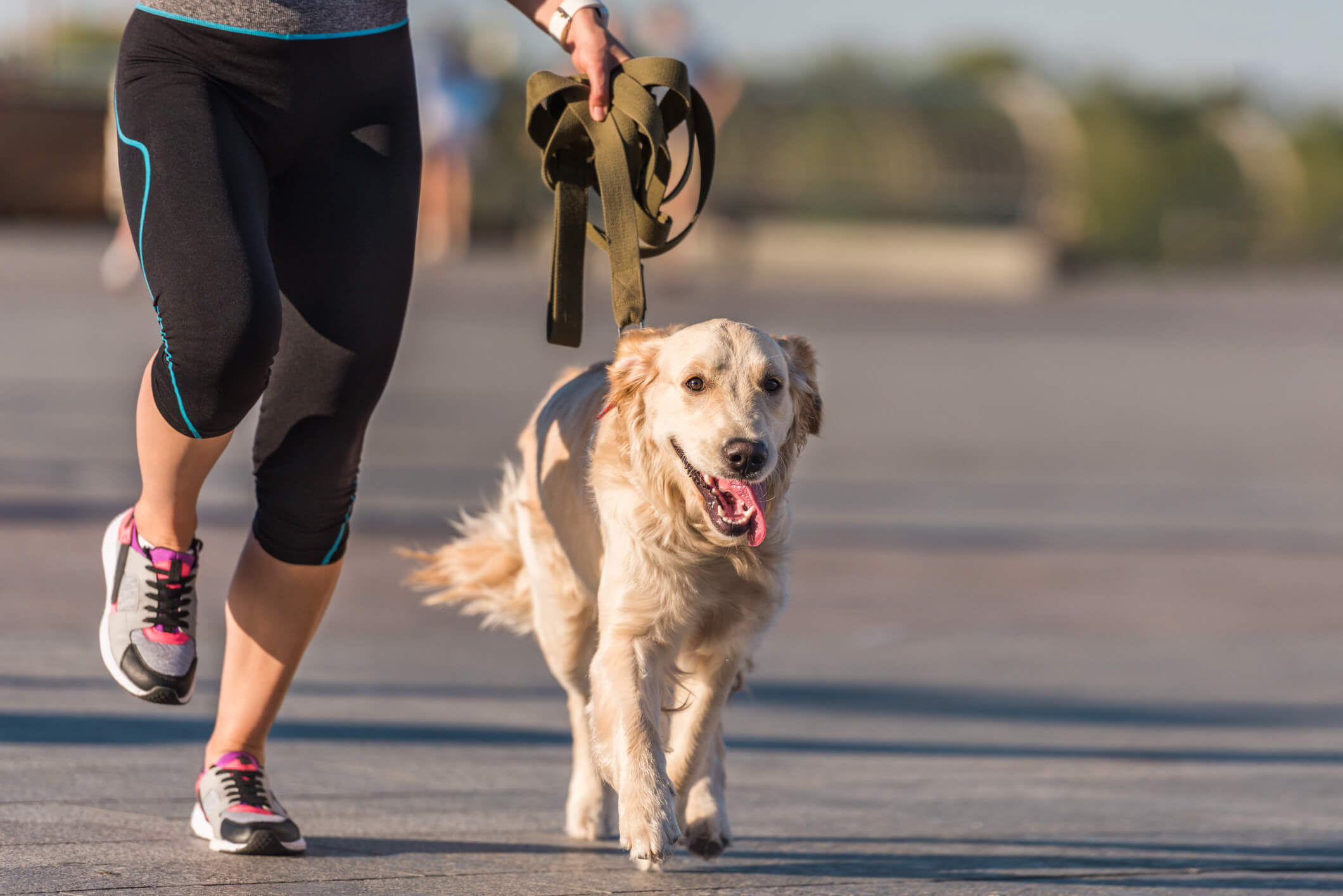
Help Your Senior Dog Fight Back Against Muscular Atrophy
Senior dogs are at risk of developing a range of health problems as they age. Mobility problems are especially common as dogs grow older, whether caused by arthritis, fatigue or a more serious problem like hip dysplasia. But another less-discussed problem that can impact not only mobility but overall wellness is muscular atrophy.
Just like in humans, dogs tend to lose muscle mass as they age. This issue is called sarcopenia, or age-related muscular atrophy. Why does this happen? One of the major culprits is reduced activity. When muscles aren’t used, they are often lost. So, if your older dog is tired and less active day after day, their muscles will begin to waste, leaving them weak.
Additionally, due to changes in their body chemistry, older dogs are not able to process proteins in the same way as they did when they were younger. This makes it harder for them to build and maintain their muscle mass.
Sarcopenia is similar to, but not the same thing as cachexia, which is muscle wasting due to illnesses like cancer or autoimmune conditions. Dogs can experience both sarcopenia and cachexia at the same time.
Muscular atrophy certainly takes its toll on older dogs’ mobility, potentially causing weakness and pain. However, muscle mass also plays a role in many bodily systems to keep your pet well. Healthy muscles are important for your dog’s metabolism, bone health, immunity, energy and balance. Therefore, muscular atrophy can increase your dog’s risk for injury and ultimately reduce their quality of life.
Sadly, sarcopenia is becoming more common in older dogs. Veterinary advancements are helping our pups live longer, but not enough attention is paid to their muscles. It’s up to us as pet owners to monitor our pets’ muscle mass and support them as they age.
Spotting sarcopenia in dogs
The most common signs of muscular atrophy in dogs will be related to their movements—or lack thereof, such as:
- Lameness
- Limping
- Paw dragging
- Disinterest in running or playing
- Difficulty navigating stairs or obstacles
- Lethargy

Their appearance might also change. Significant muscle loss can make your pup look thin or produce imbalanced and/or flabby muscles instead of even, firm ones. The condition can also cause your dog to lose weight. Although continual weight loss is a symptom of many health problems in pets, if it’s combined with weakness or other mobility problems, it could be related to muscular atrophy.
Weighing your dog regularly and conducting physical checks of their muscles can help you monitor their health as they age. Additionally, senior dogs should visit the vet twice a year for a professional exam, where your vet can spot signs of muscular atrophy early.
Maintaining or building your dog’s muscle mass
Fortunately, muscular atrophy doesn’t have to be a lasting problem for your senior dog. With a few simple changes in routine, you can help your pup maintain muscle mass before atrophy begins or rebuild muscle if the effects of atrophy are starting to appear.
Exercise
It should come as no surprise that exercise is a crucial component of helping your dog retain or build muscle. Underworked muscles begin to waste away, so it’s important that you’re encouraging your dog to stay active and work their bodies to keep them strong.
Unfortunately, exercise can be challenging for senior dogs, especially if they’re managing another mobility problem like arthritis or have low energy because of a health ailment. For these pups, encouraging daily low-impact activity is key. Take your dog for two shorter walks a day instead of one long one to give them time to rest. Swimming is another great form of exercise, since it supports your dog’s body and works different muscle groups.
If your dog has already begun to experience muscular atrophy, you’ll want to start small and build their exercise routines gradually. Dogs with severe muscle weakness might benefit from a physical therapy program led by an expert to reduce their risk of injury. These programs can help dogs achieve a level of fitness where they can begin to exercise on their own safely and comfortably.

Nutrition & supplements
Nutrition is also key in helping senior dogs stay healthy and supporting their bodies. Protein is a key component of muscle growth, so your dog’s food should be rich with easily digestible proteins and an adequate balance of carbs and fats mixed in. Always speak with your vet before changing your pet’s diet to ensure it will support all of your dog’s health conditions.
Supplements that reduce inflammation may also be beneficial both while your dog is building muscle mass and after. Things like fish oil, which contain omega-3 fatty acids, can reduce joint pain and other aches that make your dog resistant to exercise.
Treating underlying health problems
If your dog has a secondary health problem that’s resulting in disease or lethargy and reduced activity, this will need to be treated to address concerns of muscular atrophy. Both illness and mobility trouble can directly interfere with muscle-building activities by causing your pet discomfort or pain.
Muscle maintenance keeps your pet fit and happy
By paying just a little extra attention to your pup’s muscle mass, you can make their senior years much happier and more comfortable. Don’t just chock your dog’s mobility or weight loss problems up to aging—take action early to keep them healthy!


